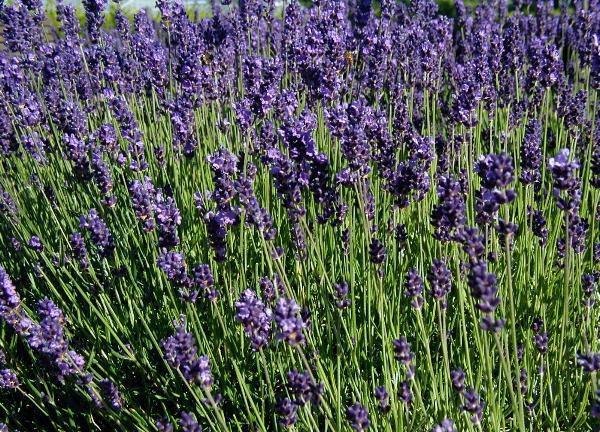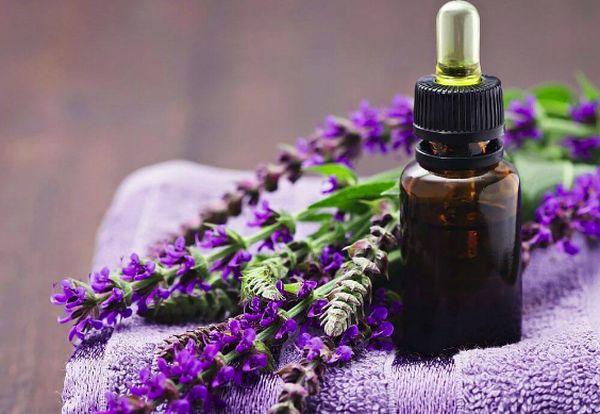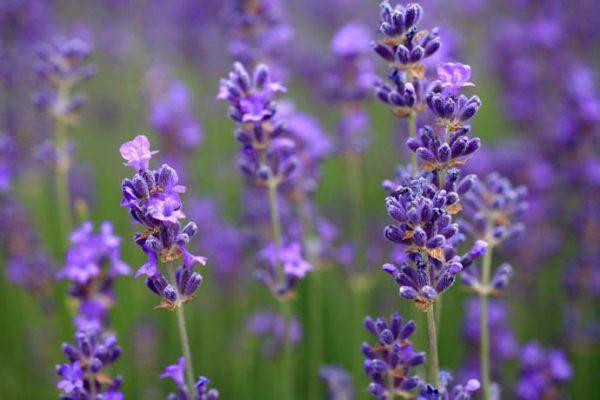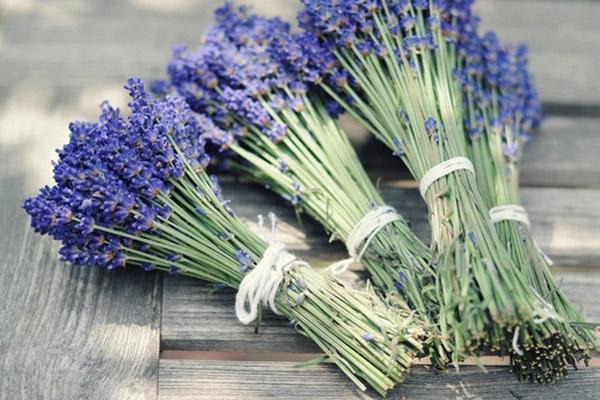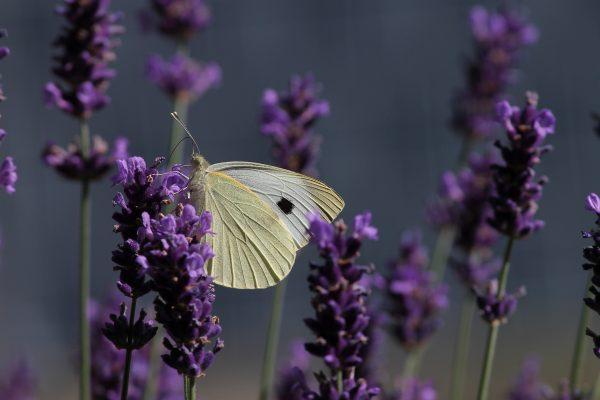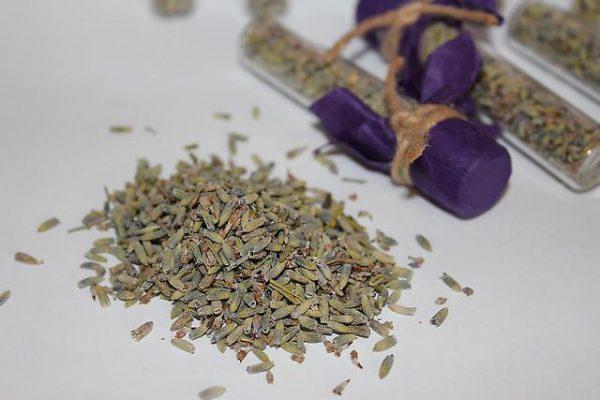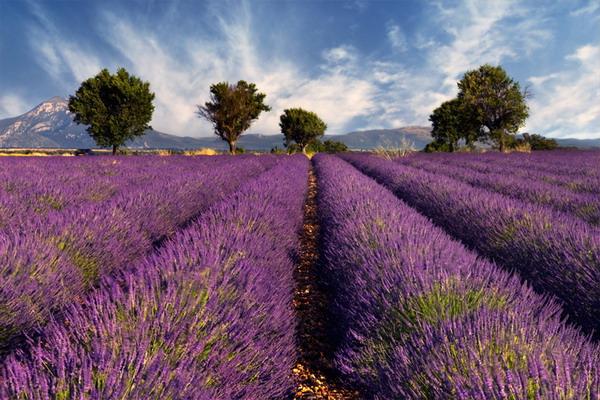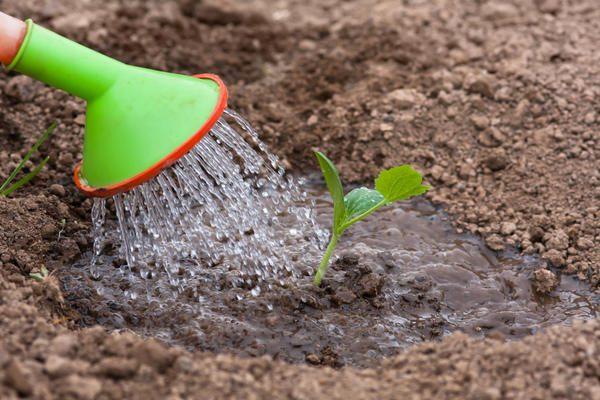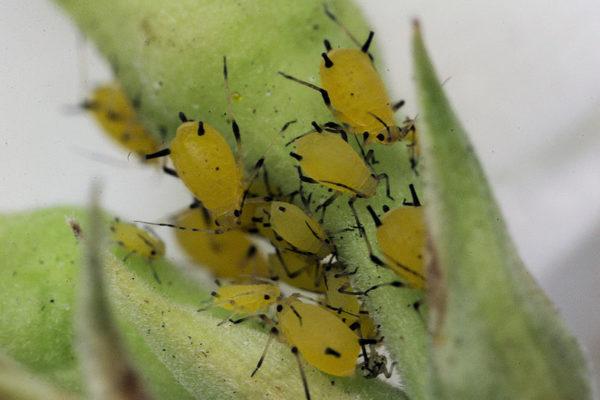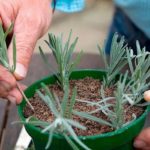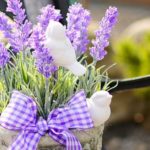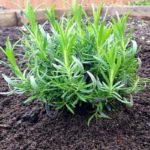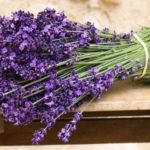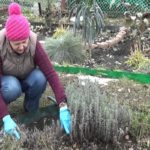The lavender flower represents the purity of mountain air, the fullness of aromas and the beauty of the southern climate. Lavender bushes are easy to grow at home, following a number of rules - choosing the proper type of soil, container, watering regime, and maintaining the temperature. Inflorescences in the form of spikes, formed by whorls of flowers of purple, blue, white or red, add color to the interior of a kitchen or balcony. Let's look at the rules for growing lavender in a room.
- Is it possible to grow lavender at home?
- Suitable varieties
- Varieties of lavender angustifolia
- Varieties of woolly lavender
- Varieties of broadleaf lavender
- Varieties of Lavender petiolate
- Growing conditions
- Flower pot
- Location and lighting requirements
- Soil selection
- Basic rules for growing lavender on a window
- Rules for sowing seeds
- Rooting cuttings
- Reproduction by layering
- Dividing the bush
- Further care of the crop
- Watering
- Feeding
- Diseases and pests
- Difficulties in growing
- Harvesting
Is it possible to grow lavender at home?
According to its biological characteristics, lavender is a heat-loving evergreen perennial subshrub, therefore, at home, lavender plants feel good, provided that optimal lighting, moisture and temperature are created for them.
In the family, lavender can be used and be useful as an essential oil crop with a pleasant aroma and a medicinal plant. Bouquets are placed in the crib with a newborn for a restful sleep; it is useful for older people to drink tea with herbs to normalize the heart rate and good blood supply to the brain. Lavender baths have a calming and rejuvenating effect.
Suitable varieties
The botanical genus Lavender includes about 50 species. The most common species and suitable for growing in an apartment are:
- narrow-leaved, with elongated pubescent leaves and spikelets of inflorescences from pale blue to purple;
- toothed, with fleshy, serrated leaves, like those of succulents;
- woolly - the leaves are whitish, covered with felt pubescence, the inflorescences are tall;
- broadleaf – the richest species in aromatic oils;
- multi-cut - triple inflorescences, fern-like leaves;
- petiolate - tall peduncles with purple flowers, the whole plant is fragrant;
- stekhadskaya - pinkish-violet flowers on rounded inflorescences.
All these species belong to the Yamnotaceae family, which are widespread in areas with temperate and maritime climates.
Varieties of lavender angustifolia
Seed producers offer for purchase lavender of domestic varieties Izida, Sineva, Stepnaya and Yuzhanka with flowering periods from mid-June to early August. However, at home, plants can bloom earlier and, with good care, produce flowering shoots throughout the year.
It is important to remember: in autumn and winter at home, flowering will not be abundant, as with the arrival of spring and summer.
Of particular interest are English and Dutch hybrids. The cost of hybrid seeds is higher, but the variety of colors and aromas is wider: Manstead (purple), Hidcoat blue (blue), Alba (snow-white), Rosea (pink), Grosso, Elizabeth, Havana (purple).
Varieties of woolly lavender
Densely pubescent leaves allow plants to evaporate less moisture and tolerate periods of drought well, at the same time, this type of lavender does not tolerate waterlogging at all, and if there is stagnation of moisture in the container, the roots may become wet, which will lead to the death of the bush. The most common varieties are Richard Gray, Silver Frost, and Sawyers.
Varieties of broadleaf lavender
These varieties are both highly aesthetic and contain many aromatic substances and essential oils. In indoor culture, the excellent varieties Royal Crown, Blue Cushion (pale purple), Blue Ice (light purple), Christiana (blue-violet), Heavenly Angel (white).
Varieties of Lavender petiolate
The upper petals, like a tuft, above the flower head create the impression of an exotic plant; many varieties of Stahad lavender are bicolored: Fathead - a dark blue spikelet with a scarlet tuft, Rocky Road - a purple spikelet with a pink tuft, Tiara - a blue spikelet with a white tuft, Kew Red - bright red spikelet with a white tuft, Lilac Wings - purple spikelet with a pink tuft.Single-color varieties are no less beautiful - Helmsdale is red, Snowman is white.
Growing conditions
In nature, wild lavender bushes are found on the sandy coastal plains of the Mediterranean, in the arid mountainous regions of Africa, Australia and India. The plant loves warmth and does not tolerate stagnant moisture in the soil. Let's take a closer look at what conditions need to be created at home to successfully grow lavender.
Flower pot
The root system of all varieties of lavender is deeply penetrating and taprooted. At the surface, the root branches, thickens and eventually becomes covered with a dense crust. Therefore, for lavender you should take a deep pot, the minimum depth of the container should be 12-14 centimeters. It is necessary to select containers on the basis that the flower will stay in the container for at least 3-4 years. The shape can be round, square or rectangular pots.
Vertically growing lavender bushes, planted at a distance from each other in elongated oval or rectangular containers, look impressive. Bushes with drooping shoots are more impressive in round or square pots. The color scheme of the container is also important - it is necessary to take into account the color of the flower and the interior details, creating harmony. It is advisable not to clutter the room with lavender with other flowers, otherwise the plant will not look advantageous.
Location and lighting requirements
To grow lavender at home in pots, you should choose south or southwest windows, where it is warm and has a lot of light during the day. In winter, it is advisable to insulate the window sill; on cloudy days, additionally illuminate the crop using a phytolamp.Lavender should spend at least 6-7 hours a day in the light in winter, and at least 12 hours in summer. The room should be ventilated more often, but without creating drafts.
In the summer, the pots are moved to a balcony or loggia, trying to prevent direct sunlight from falling on the delicate plant, otherwise it may burn. It is preferable to find a bright place for the container in the depths of the balcony.
Soil selection
Lavender grows on alkaline soils with a predominance of sand, so coarse river sand should be added to the soil mixture.
Important! When selecting a soil mixture, pay attention to the pH of the soil; it should be above 7.0.
If the substrate is mixed independently, then you should take garden soil, sand and peat in a ratio of 2:2:1. You can’t take a lot of peat, as it has an acidic environment. On sale there is soil for cacti with a pH of 7.5-8.0, which contains turf soil, ceramic chips and vermicompost. It's great for lavender.
Basic rules for growing lavender on a window
To grow lavender in pots, you can sow seeds, root cuttings taken from friends or acquaintances, make layering, or divide the finished bush.
Rules for sowing seeds
It is better to sow in early spring, since at this time the plants exhibit the greatest growth activity. The seeding depth is half a centimeter. A film is stretched over the container with the sown seeds to avoid evaporation of moisture and drying out of the seeds. Shoots appear within 10-20 days.
Immediately after the sprouts appear, the film is removed and the plants are provided with access to light, ventilation and loosening of the soil.If the seedlings are excessively compacted, it is advisable to separate them into separate containers.
Rooting cuttings
Shoots aged 2 to 4 years, having bark, take root well in water or sandy substrate. To do this, the cutting must be freed from the lower leaves and placed in a container with clean water or the lower end must be dusted with Kornevin or KorneStim powder, and then planted in the substrate, deepened by 2-3 centimeters. Cuttings can be stored in the refrigerator for about a month.
Reproduction by layering
If you have a lavender bush in mind that you would like to propagate, then one of the old branches that deviate down towards the soil can be sprinkled with substrate, and after 3-4 weeks, carefully cut off from the mother bush, dug up by the roots and transferred to a new container.
Dividing the bush
Dividing the bush can be done if the plant is mature, and many well-developed shoots extend from its root, and the root itself has grown in the horizontal direction. In this case, the bush is carefully cut at the root with pruning shears and planted in separate containers.
Further care of the crop
When grown at home, lavender requires infrequent watering, fertilizing and pruning of the bush. In addition, it is important to arrange “seasonality” - in winter it should be cooler and drier, in summer it should be warmer and more watering. Let's take a closer look, how to care for lavender at home.
Watering
In summer, watering should be no more than 2 times a week, moderate in volume. If the soil contains a lot of sand, the soil in the container will dry out noticeably, but this should not be a reason for frequent and abundant watering.
In winter, watering should be once every 10-14 days, in small portions.The water should be at room temperature; you cannot water the flowers with unsettled water coming straight from the water pipes.
Feeding
Lavender is responsive to fertilizing with potassium fertilizers. In summer, the soil can be fertilized with 5-7 grams of potassium salt, dissolved in 0.5 liters of irrigation water. In the spring, it is good to fertilize with Potassium Humate at the rate of 5 milliliters per 0.5 liter of irrigation water.
Important! Nitrogen fertilizers, as well as manure and chicken droppings, should not be given to lavender.
Diseases and pests
Plants in containers may be affected by gray rot. This fungal disease manifests itself in the form of a white fluffy coating that appears on the shoots. Over time, the plaque grows into blue-gray mold, and the plants die.
In the initial stage of the disease, you can save the plant by spraying it with Hom or copper sulfate. In later stages, drugs have little effect.
Among the pests that can attack lavender are spider mites, carried from the street by the wind or with shoes. If a light cobweb is visible on the shoots, this is a sign of the appearance of mites, which are not visible to the naked eye. The bushes will be saved by one treatment with Fitoverm.
Difficulties in growing
The most difficult thing when caring for lavender is maintaining watering schedules. The plant does not like long periods with waterlogging or lack of moisture in the soil.
To avoid this problem, make it a rule to water your flowers every other day, and vary the volume of water depending on the room temperature. If it's hot, give more water and vice versa.
Harvesting
The spikelets are collected at the moment of full opening of each flower, tied into small bouquets and dried in a suspended state on the balcony. Store dry herbs in paper bags or cotton bags for no more than 1 year.Dried bouquets in vases can be used in interiors as dried flowers. The lavender plant, due to its beauty and benefits, deserves to be planted in an apartment. Use our recommendations to grow it and harvest a generous harvest of fragrant flowers.

